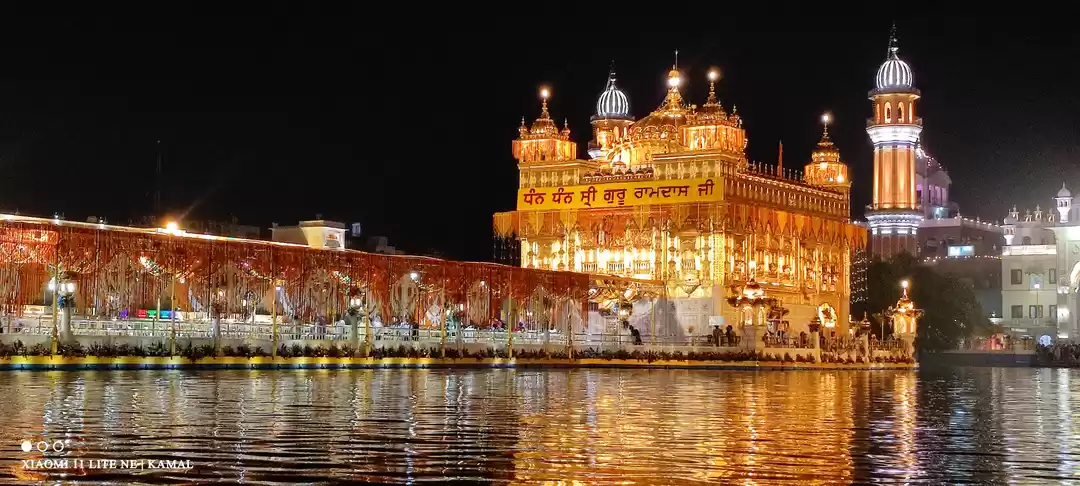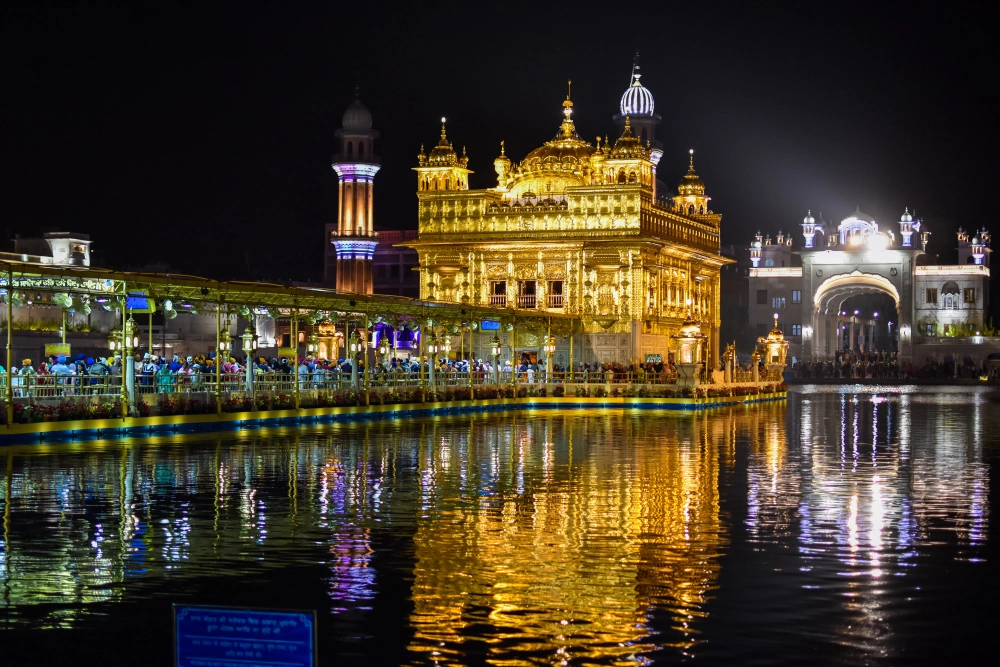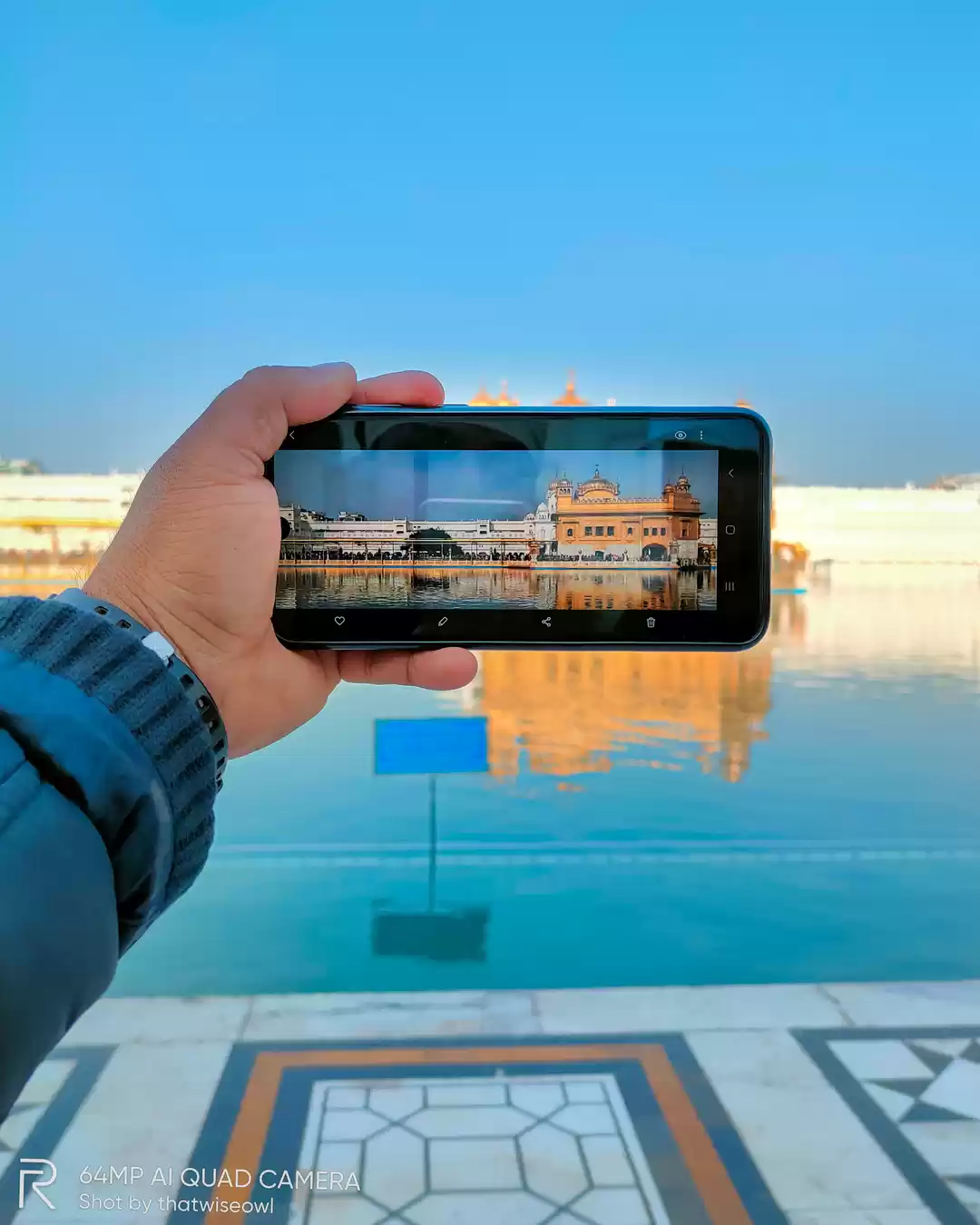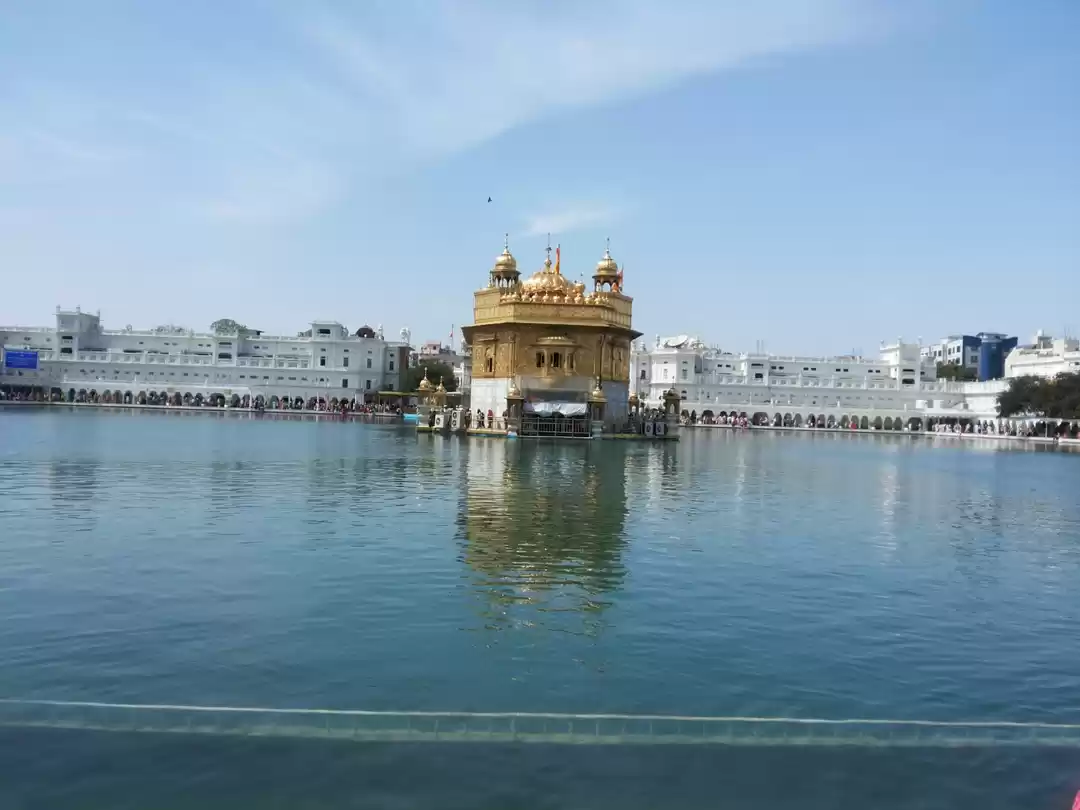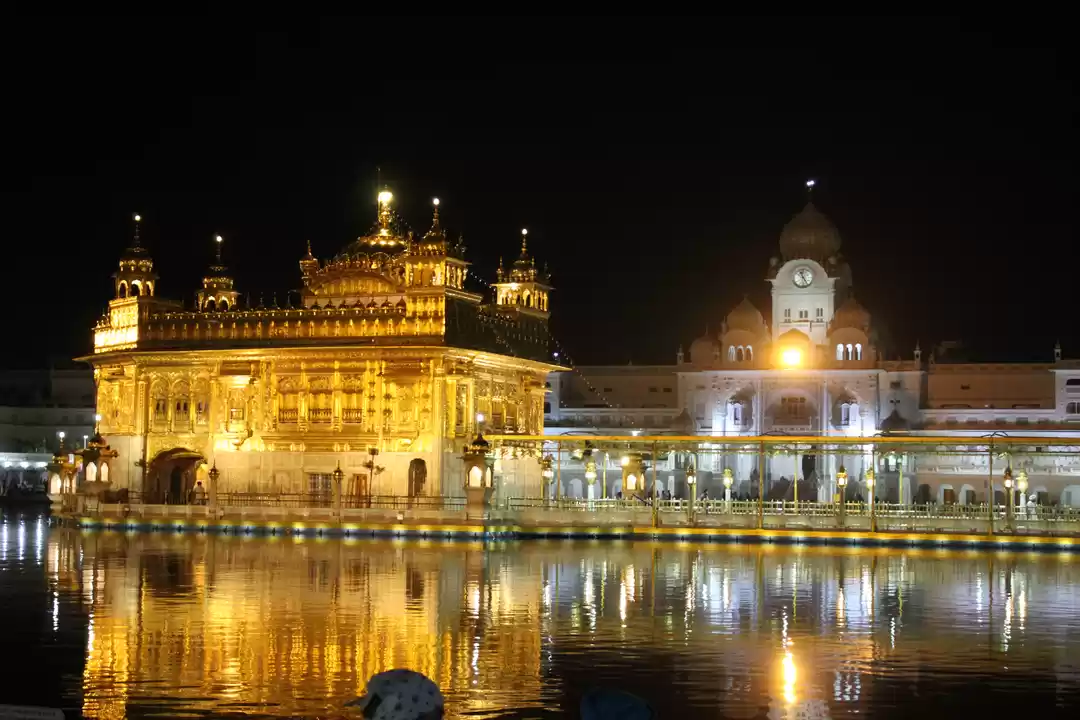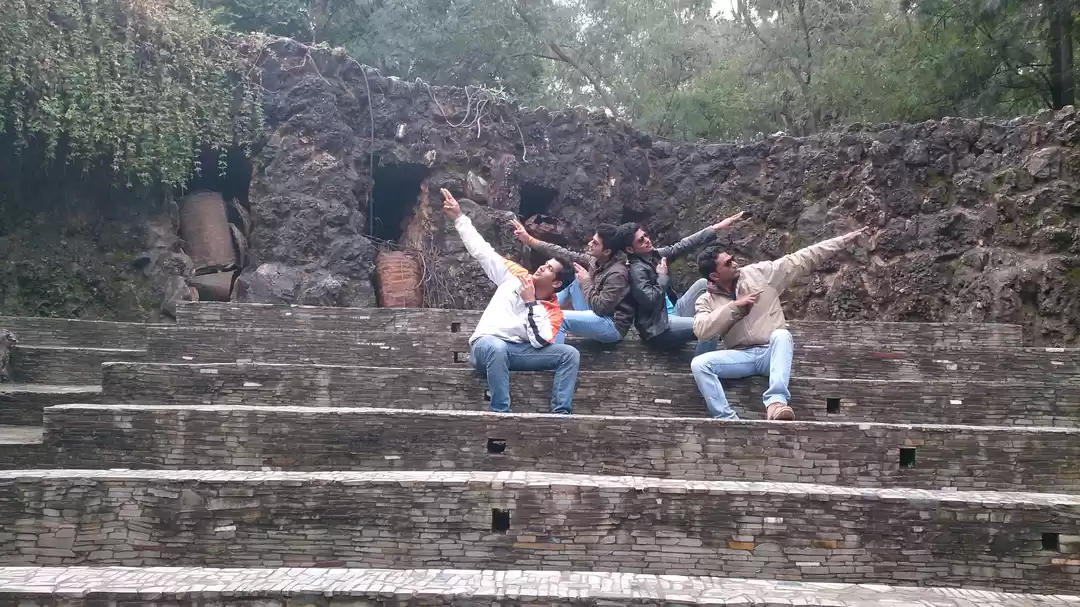Serene, Serving and Scintillating - three adjectives that captures the essence of an evening at Harmandir Sahib, more popularly known as the Golden Temple of Amritsar. Its hard to imagine anything more beautiful than the coruscating Harmandir Sahib under the night sky; a view that can rival the iconic Taj Mahal in visual delight.
Located in the north western state of Punjab, Golden Temple whose foundation stone was laid by Sai Milan Mir of Lahore, a Muslim pir, is the holiest shrine of the Sikhs. Shrugging off horror incidents like the Jallianawala Bagh massacre and Operation Bluestar, Harmandir Sahib has emerged as an epitome of peace and brotherhood, a fact exhibited by the thousands of daily visitors who visit the monument irrespective of their religion. What struck me is the absence of police forces and security checks despite the colossal historical and religious importance of Harmandir Sahib; yet everything runs smoothly without any chaos and untoward incident.
I visited Harmandir Sahib with friends during my visit to Amritsar in November 2017. After lots of consultation, I booked my hotel in the Golden Temple area. If you are visiting Amritsar for tourism purpose, there is no better place. Prominent tourist places like the Golden temple, hall market, partition museum and Jallianawala Bagh ( I hate listing it as a tourist place for the grief history it beholds) are located at close proximity. After visiting the Wagah border at sunset, I reached my hotel, freshened up and started for the Golden temple at 8 PM.
The area near the Golden temple is extremely lively during the evening time. There are hundreds of visitors and the avenues are illuminated with colourful lights. One has to pass through the hustle and bustle of Hall market to reach the Gurudwara. However it was an enjoyable feeling and I loved walking with the other visitors, intermittently stopping at few shops. Let me share a few pictures of the avenues and the area near the Golden temple :


After crossing the market area, we reached near the entrance. There is a free footwear deposit counter in the left side but since we reached late evening, it was probably closed and we saw people removing their shoes in the courtyard in front of the entrance gate and we followed them. There were two kar sevaks who greeted the visitors at the entrance. The first glimpse of the gilded domes of the Harmandir Sahib is enough to leave one spellbound.


Built at the centre of an artificial lake called the Amrit Sarovar (this is where Amritsar gets its name from), Harmandir Sahib looked stunning. All of use were engulfed by the miasma of divinity that wafted in air. The gurudwara is built on principles representing the worldview of Sikhism. As opposed to other religious places which typically have one main entrance, there are four entrances to the Golden temple depicting openness and acceptance. The sanctum sanctorum is below the ground level which depicts that human needs to come down to discover God. Another important aspect is the emphasis on the strength of collective work and volunteerism. Almost all work in the temple is carried out by the kar sevaks or the volunteers. Devotees visiting the temple also volunteer in activities like cleaning the floors, serving water, washing dishes, etc.

Further, the temple premises is practically a museum of Sikh history. There are many memorial plaques commemorating key events in the history of Sikhism; their gurus, saints and martyrs. The legend of Maharaja Ranjit Singh, and martyr Baba Deep Singh of the khalsa military has special mentions. There are inscriptions commemorating the Sikh martyrs who died in the world wars. There are three ancient ' ber' trees in the Golden Temple Complex - Dukhbhanjani Beri, Ber Baba Budha Sahib and Lachi Ber, out of which the first two are around 400 years old. These trees have great religious significance (particulalry Dukhbhanjani Beri) and represent either an event of religious importance or a revered saint.

We walked around the temple and spent quite some time on the steps surrounding the Amrit Sarovar. We saw the palanquin being prepared for the Sukh Asan sahib. The palanquin is decorated with scented flowers; rosewater, other fragrances are sprinkled on it and it is carried to the sanctum sanctorum from where the Guru Granth Sahib is taken in a procession to the Akal Takt (seat of the timeless one). Then the head priest carries the Guru Granth Sahib on a cushion on his head and places it on a cot in a chamber at Akal Takt where it retires for the night, again to be carried back in a similar procession next morning at 4 AM. We watched the procession make its way amidst the kirtan and rhythmic recitation of hymns from the sacred text.
At the end we went to the Guru ka Langar. It is one of the largest community kitchens in the world and serves langar prasad or free meals to the devotees round the clock, throughout the year. Hundreds of people sit in together in rows as food prepared by the volunteers is served to them. All the work in the kitchen starting from cutting vegetables, cooking, serving the food and finally washing the dishes is done by volunteers. All of these is made possible through donations. There are many devout Sikhs residing in foreign countries who come every year to serve at the Golden Temple. We sat among the devotees and relished the meals which had chappatis, dal and kheer.
We spent some more time at the banks of Amrit Sarovar cherishing the beauty of the gilded domes before returning to the hotel.
Next morning we again went to the temple. The morning view of the temple is equally captivating. We joined the queue of devotees and slowly inched toward the sanctum sanctorum. Inside the sanctum, the arches and the walls are adorned with intricate gold artwork. The Guru Granth Sahib is placed on a cushioned silk platform and is decorated with scented flowers. There was continuous recitation of melodious hymns accompanied by the beats of classical musical instruments. The feeling was surreal.



The visit to Golden temple was in may ways similar to my visit to Bodh Gaya earlier in the year. Both places saw the birth of a completely different school of thought that defied the norms of the time and went on to establish themselves as independent religions. Hope you liked this post. Please share your queries, feedback, experiences in the comments section below.




